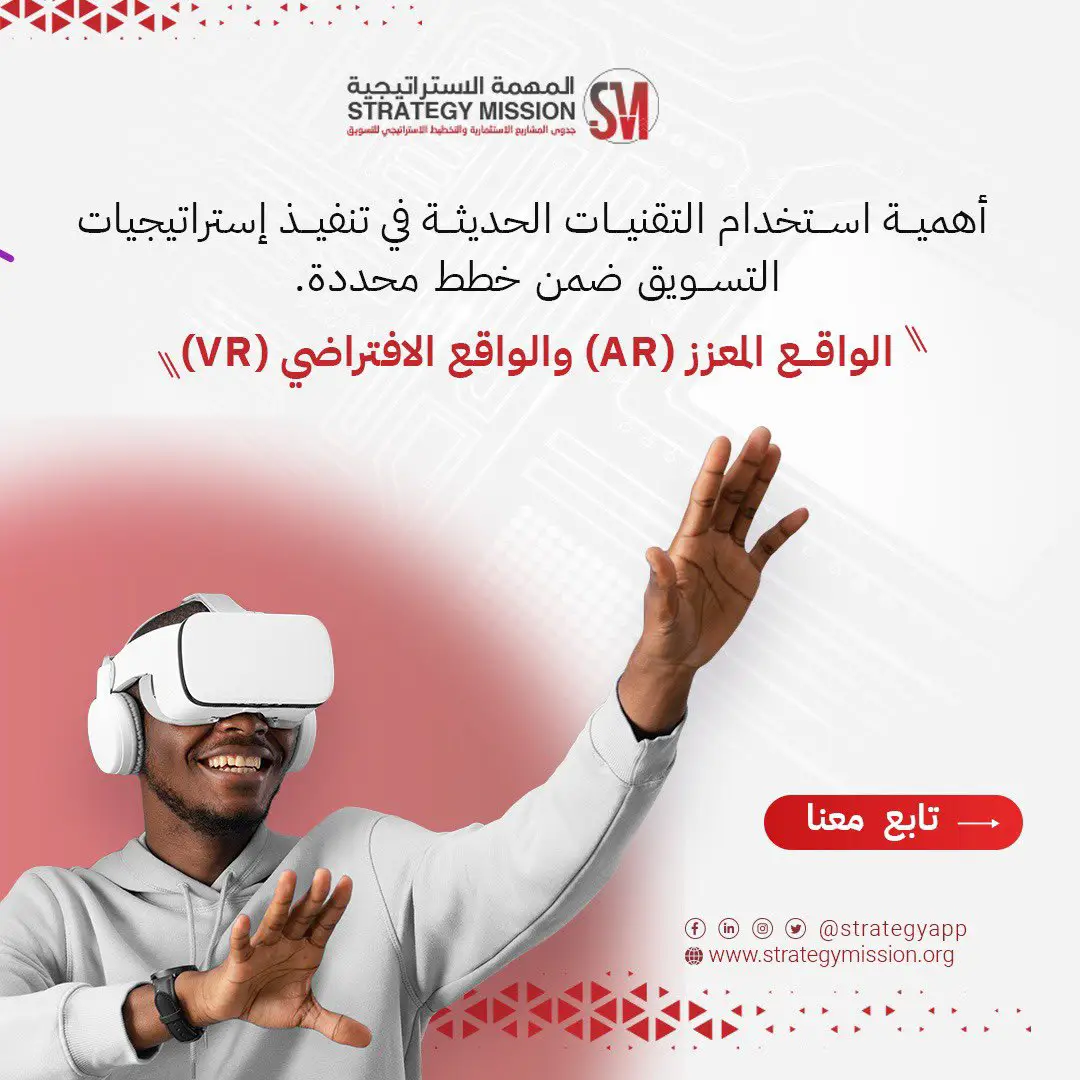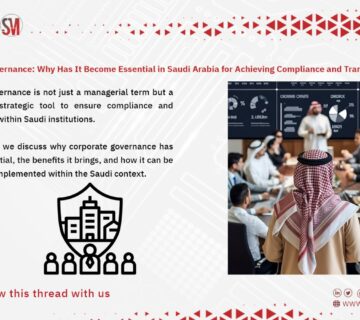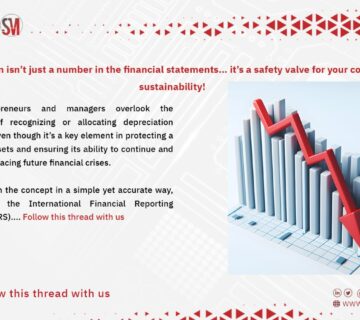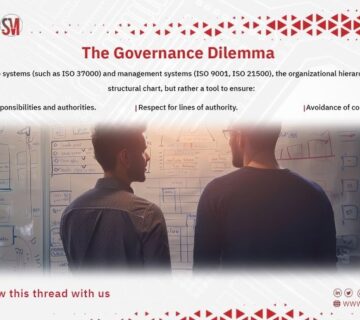We will begin, God willing, a new series of threads in which we will focus on the importance of using modern technologies in executing marketing strategies within specific plans.
We will start with VR and AR technologies.
Augmented Reality (AR) :
Augmented Reality (AR) is a technology that adds digital elements (such as images, videos, and texts) to the real world, enhancing the user experience by combining digital and real-world elements. AR can be accessed using smartphones, tablets, or augmented reality glasses.
Examples of Augmented Reality :
- Games: The game “Pokémon Go,” where players can see Pokémon in the real environment through their phones.
- Shopping: Applications that allow you to virtually try furniture in your home before purchasing it.
- Education: Educational applications that let students view 3D models of the elements or objects they are studying.
Virtual Reality (VR) :
Virtual Reality (VR) is a technology used to create a fully immersive simulated environment. People use VR devices, such as VR headsets, to experience a virtual world that can be entirely different from the real world. Using VR requires specialized equipment, such as VR headsets and sometimes additional devices like controllers and sensors.
Examples of Virtual Reality :
- Games: VR games like “Beat Saber,” where players enter a virtual world and interact with virtual objects.
- Training: Training pilots in virtual flight simulators or training surgeons in virtual surgical environments.
- Virtual Tourism: Virtual visits to famous tourist destinations, such as museums and historical landmarks.
Using Augmented Reality (AR) and Virtual Reality (VR) in Marketing Strategies :
Did you know that using Augmented Reality (AR) and Virtual Reality (VR) can revolutionize marketing strategies? Let’s explore how! #Marketing #AugmentedReality
Augmented Reality integrates digital elements with the real world through smart devices, while Virtual Reality transports you to a completely digital world through specialized headsets.
–Examples :
Companies like IKEA and Sephora use AR to allow customers to try products before purchasing, increasing confidence and satisfaction.
– Benefits for Marketers :
Utilizing AR and VR creates interactive experiences that enhance engagement and provide accurate analytics on consumer behavior and preferences.
– Implementation Challenges :
Despite the benefits, there are challenges such as high development costs and the need for advanced technology. This means that the initial investment may be substantial.
– The Future of Marketing with AR and VR :
As technology evolves and costs decrease, we expect to see more companies adopting these technologies to offer immersive and unique experiences.
Practical examples of using augmented reality (AR) and virtual reality (VR) technologies in marketing :
- Product Experience: Lego uses augmented reality to show what an assembled model will look like in real size by pointing a phone camera at the box in the store.
- Training and Education: Companies like Boeing are using virtual reality to train technicians in aircraft maintenance, dramatically reducing time and cost.
- Interactive experiences at events: At sporting events, AR is used to enhance the viewer experience by adding interactive statistics and graphs to the live broadcast.
- Virtual Shopping: Stores like Zara offer virtual shopping experiences where customers can try on clothes in a virtual environment before purchasing them, which improves satisfaction and reduces returns.
- Virtual tourism: Museums such as the Louvre offer virtual tours that enable visitors to explore and learn about the exhibits from anywhere in the world.
AR and VR technologies are not just the future of technology, they are powerful tools today in reshaping how brands interact with consumers.
For ISO certification services for companies and institutions only (not for individuals):





No comment